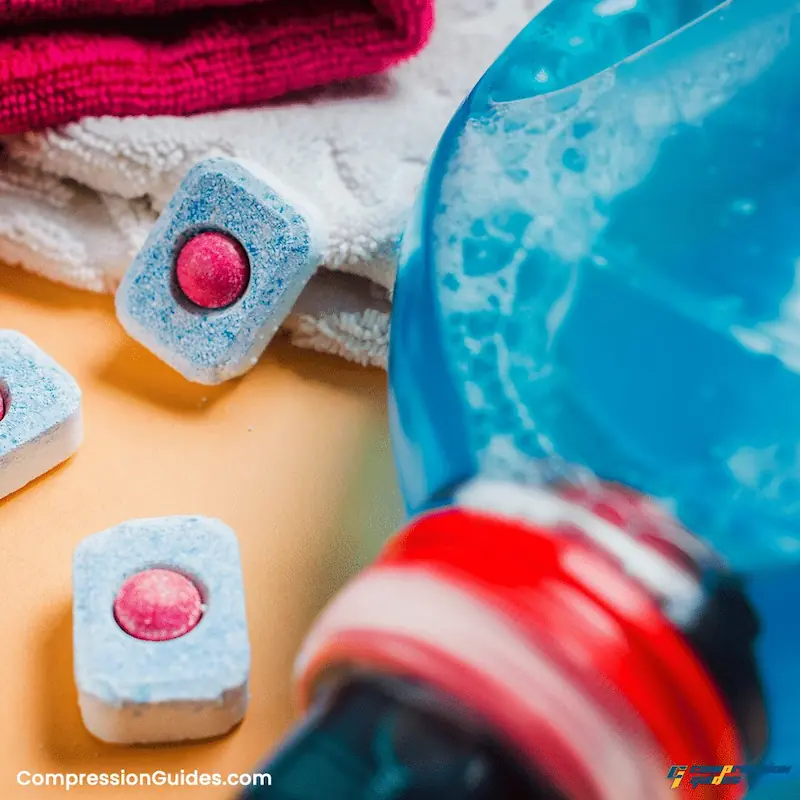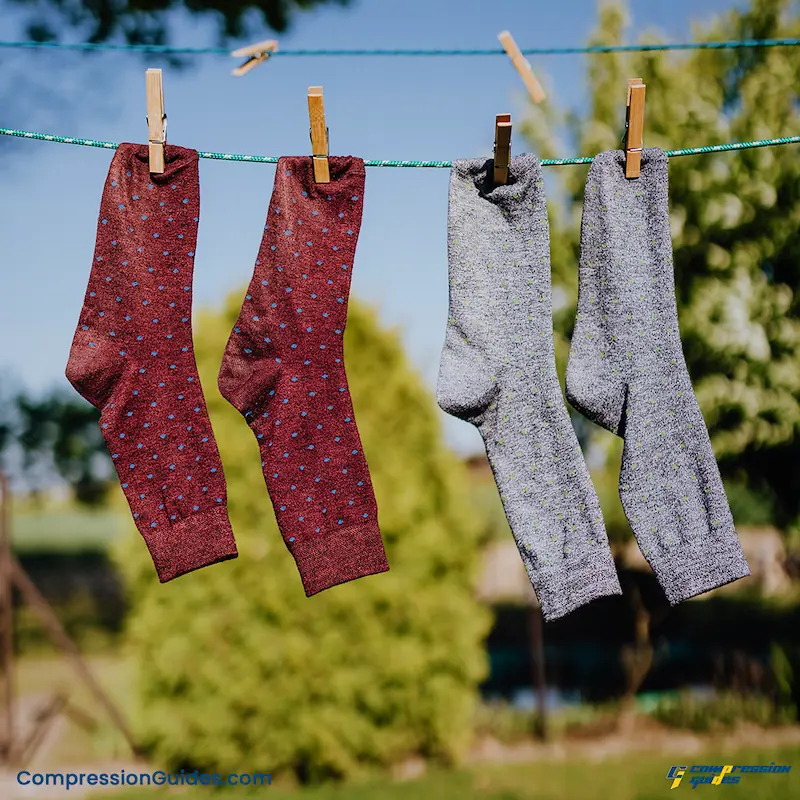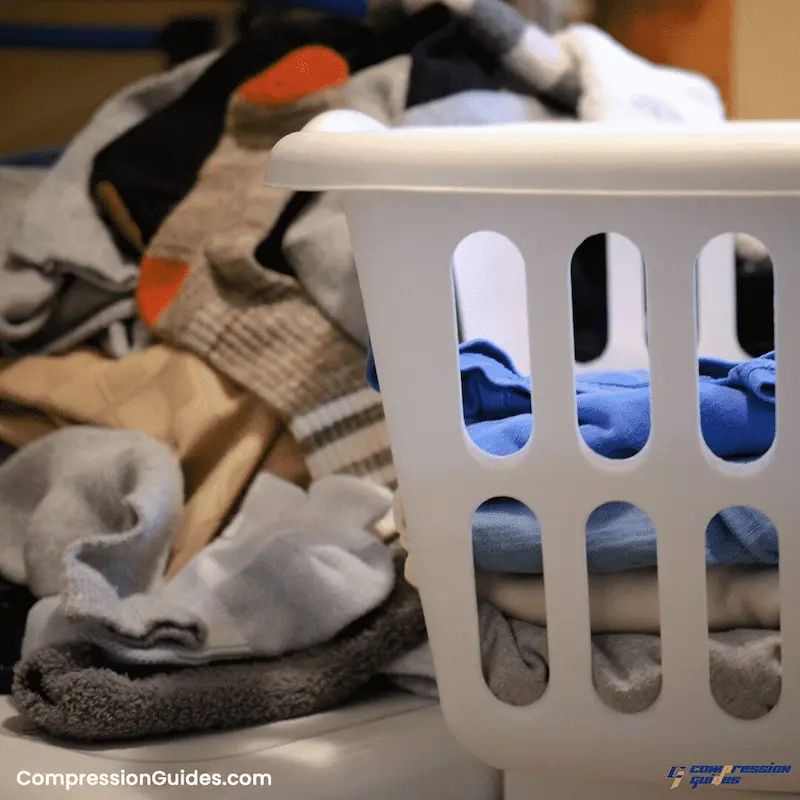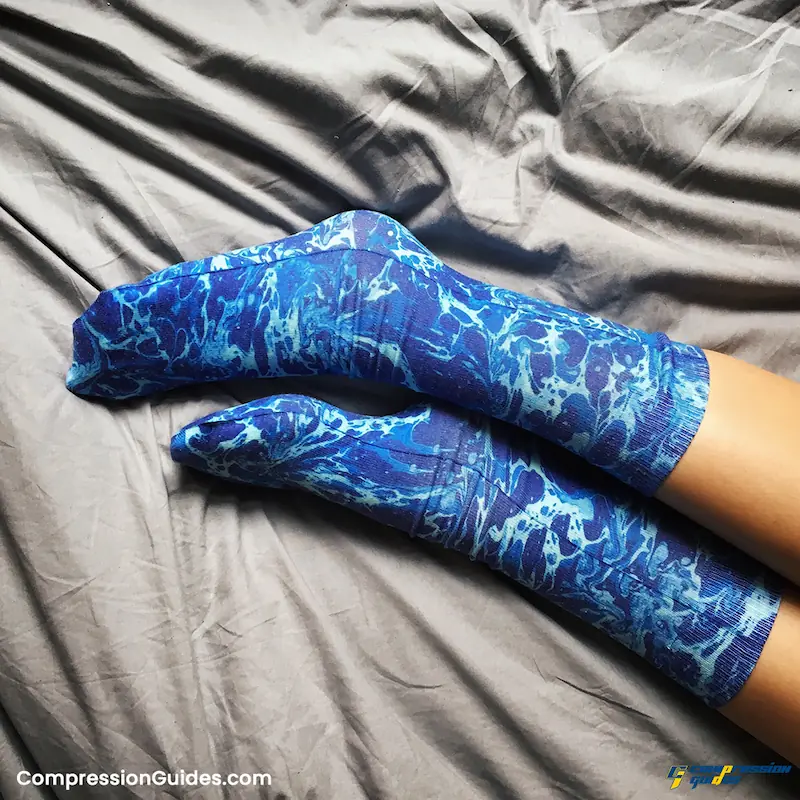Compression socks are specially designed socks that require appropriate care and maintenance, regardless of whether you’re a sportsman boosting your performance and endurance, a mother chasing after her toddler, or you work in any job that requires you to be on your toes 24/7.
They should be kept clean and fresh in order to prevent bacteria and remove body oil. After wearing them for a few hours, you should wash them to restore their elasticity. A proper elastic quality ensures that you’re achieving adequate and appropriate compression levels.
Step By Step Method To Wash Your Socks
Washing your compression socks after each use will remove dirt and bacteria that could cause infection if not properly cleaned. Additionally, washing after each use will remove oil/sweat that would otherwise tear and rip them.
Some brands are machine washable and dryable, while others require hand washing and air drying. It may be helpful to wash your new compression, as it will reduce stiffness and remove dyes that may cause allergic reactions. Using mild detergent is recommended
Below are the three simple steps to follow to hand wash your stockings:
Step 1
Fill a small tub or bowl with cold water. Soak the stockings in cool water and take them out. Make the water soapy by adding a mild detergent. Using your hands, combine the water and the cleanser. Put the stockings back in the water and let them sit for five to ten minutes. Don’t use high-temperature water since the heat may damage the elasticity of your stockings.
Step 2
Once your stockings have fully soaked, rub them with your hands to remove any dirt or dust. After that, squeeze them to remove excess soapy water. Squeezing should be done gently to avoid stretching the fabric. Stretching while squeezing may result in the socks not regaining their original shape.
Step 3
Remove as much soap and water from the socks as possible. You should see clear water draining from the stockings on squeeze. Let them dry flat in a warm place. Your stockings should not be directly exposed to the sun. These can be reused after drying out.
Machine Washing Compression Socks
If you are washing your socks in the washing machine, wash them separately or with garments of the same color at a temperature of 30 or 40 degrees. Wash them on a gentle cycle. You should use a simple color detergent without brighteners. It is never a good idea to use fabric softener.
Add mild soap or detergent – or the cleaning product recommended by the sock manufacturer to the washing machine. Fabric softeners and chlorine bleach may cause damage to compression fabrics. Once the wash cycle has finished, remove the socks and gently press any excess water out of them.
Machine vs Hand Washing Socks
The longevity and durability of compression socks are dependent on how they are washed. It is highly recommended not to wash them in a washing machine and to allow them to dry naturally.
In addition to adding unnecessary roughness to your compression gear, washing machines and dryers will reduce their life span and prevent you from making the best use of your investment.
These socks are manufactured from a synthetic fabric that requires gentle washing with hands.
Best Detergent To Wash The Socks

During the washing cycle, you should use a detergent to ensure that oils and microscopic organisms such as bacteria and fungi are removed from your socks.
A regular detergent is probably not the best choice for washing the stockings. These detergents may contain powerful chemicals and compounds that can damage socks’ fabric and elasticity. Washing your stockings is best done with a mild detergent such as Nathan Active Wear Detergent.
Also, any cleaner containing chlorine dye can make your socks crumble. Using a mild detergent or soap will be your best bet when it comes to cleaning your stockings.
How To Dry Compression Socks

You probably need to dry your socks after washing them. The process of drying them is a simple one, but not an easy one.
How Frequently You Should Wash The Socks?

It is recommended that you wash your stockings every time you wear them so that you can get the maximum benefits. The dirt that settles in the fabric of compression socks affects their elasticity and spandex. Washing your stockings after each use will restore their shape.
Tips To Make Your Socks Last Longer
Wear On Clean & Dry Feet

It is always advised to wear socks on clean and dry feet, whether compression sleeves or regular socks. You should wash your feet with a mild soap, let them air dry or pat them dry, and then put your footwear on. This will keep the dirt and dust from settling in the socks, as well as keep your feet safe from fungal infections.
Reducing Rigidity Of Your New Socks Pair
Getting yourself a brand new pair of socks can be joyful but they can be stiff and rigid to wear for the first time. It is not a problem because you can easily reduce the stiffness by soaking them in water or gently washing them in your hands. This will ease the fabric’s rigidity so that they are comfortable to wear.
Stockings that are too tight can cause pain and tingling and can leave red marks on the skin. Your skin becomes discolored or numb.
The fabric choice can make a big difference in keeping the stockings comfortable during the warmer months. Cotton is a natural fiber that is breathable and helps to wick away moisture. Microfiber is also breathable and is often designed to manage moisture to keep your legs dry and cool.
Avoid Excessively Stretching Of The Fabric
The purpose of the stocking is to protect you from getting injured while wearing them. Also to keep adequate pressure while standing and walking. Shears and excessively stretching them will cause them to lose elasticity and do not serve the function they are designed for.
These socks are specially made that fit snugly around your legs and gently squeeze them. Pressure stockings are graduated are tighter around the ankles and gradually loosen as they move up your leg.
Replacing Your Socks
Manufacturers claim the compression level will last for about six months. People generally replace their stockings every four to six months. It’s a good idea to buy more than one pair of compression stockings if you wear them every day.
DO replace every 3-6 months.
With daily use eventually, the elastic fibers will break down. This is normal. Every three to six months, you’ll probably have to replace your stockings. If you experience sagging or difficulty putting on your stockings, that might be an indication.
Compression stockings must be replaced if you experience any of the following:
Conclusion
Though it may be difficult to say goodbye to your old socks, buying new ones will be better in terms of health concerns.
Compression socks are expensive, but they are a good investment because they last a long time and are more durable.
The ideal approach to achieve a long and efficient life for your socks is to buy more than one pair at a time so that you can alternate their use, wash and dry them after each use, and make them last a lot longer.
You might want to invest in a few sets of compression stockings that will work with each color you wear. Besides, the stockings today come in a wide variety of styles and colors.
Read Our Reviews:
7 Best Hiking Compression Socks
12 Best Nursing Compression Socks
10 Best Compression Socks For Men


